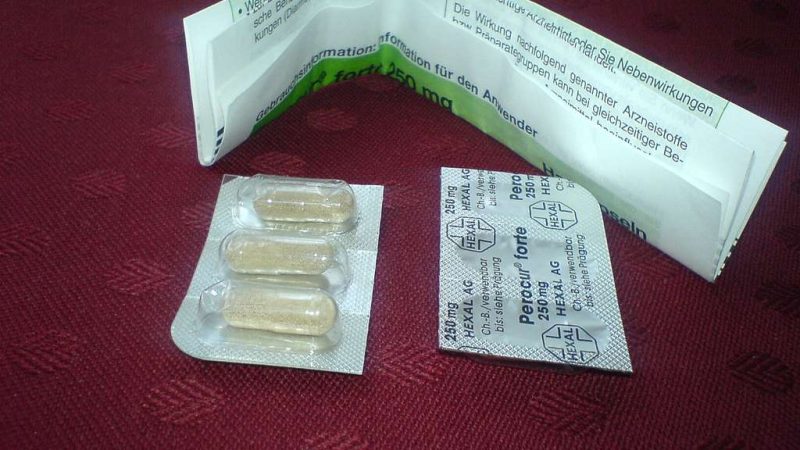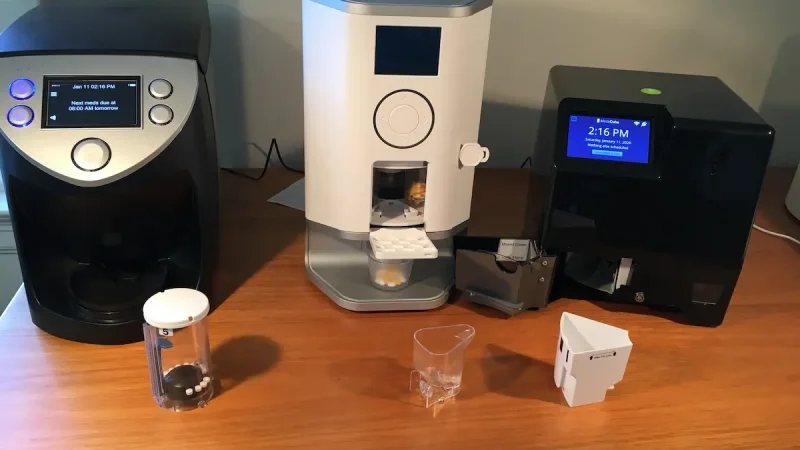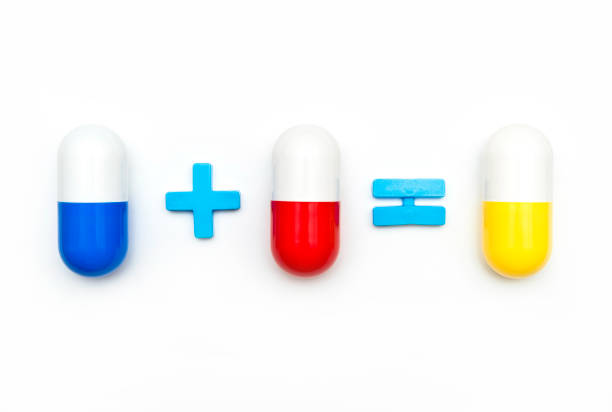Medications for Controlling Irregular Heartbeat

manage these conditions effectively. The choice of medication depends on the type of arrhythmia, its severity, and the patient’s overall health. This article will explore the different types of medications administered to control irregularities of the heartbeat, the mechanisms of action, and their potential side effects.
Table of Contents
Toggle1. Understanding Irregular Heartbeats (Arrhythmias)
Arrhythmias occur when the electrical impulses controlling the heartbeat do not function properly, leading to an abnormal heart rhythm. The heart may beat too fast (tachycardia), too slow (bradycardia), or in an erratic pattern. Some common types of arrhythmias include:
- Atrial Fibrillation (AFib): A common type of arrhythmia where the heart’s upper chambers (atria) beat rapidly and irregularly.
- Ventricular Fibrillation (VF): A life-threatening arrhythmia that causes the ventricles to quiver rather than contract.
- Supraventricular Tachycardia (SVT): A rapid heartbeat originating above the ventricles.
- Bradycardia: Slow heart rate, typically less than 60 beats per minute.
- Premature Ventricular Contractions (PVCs): Extra, abnormal heartbeats originating from the ventricles.
Arrhythmias can result from various underlying conditions such as heart disease, high blood pressure, electrolyte imbalances, and stress. Depending on the severity, some arrhythmias can lead to complications like stroke, heart failure, or sudden cardiac arrest.
2. Medications for Irregular Heartbeats
There are several classes of medications used to treat arrhythmias, each with its own mechanism of action. These drugs can be categorized as antiarrhythmic agents, rate-controlling medications, anticoagulants, and others used to address the underlying causes.
A. Antiarrhythmic Medications
Antiarrhythmic medications are specifically designed to prevent or correct abnormal heart rhythms. They are divided into four main classes, based on their effects on the electrical activity of the heart:
Class I: Sodium Channel Blockers
Class I antiarrhythmics work by inhibiting sodium channels in the heart cells, slowing down the electrical signals and stabilizing the heart’s rhythm. These medications are often used for conditions like ventricular arrhythmias and supraventricular tachycardia.
- Examples:
- Lidocaine: Often used in emergency settings to treat ventricular arrhythmias.
- Quinidine: Used to treat both atrial and ventricular arrhythmias.
- Procainamide: Used for ventricular arrhythmias and atrial fibrillation.
- Mechanism of Action: These drugs work by inhibiting the flow of sodium ions during the depolarization phase of the cardiac cycle, which decreases the excitability of heart cells and helps restore normal rhythm.
- Side Effects: Common side effects include dizziness, nausea, blurred vision, and, in some cases, proarrhythmic effects (worsening of the arrhythmia).
Class II: Beta-Blockers
Beta-blockers are commonly prescribed to control heart rate and prevent arrhythmias, especially in conditions like atrial fibrillation. These medications block the beta-adrenergic receptors in the heart, which are responsible for the effects of adrenaline.
- Examples:
- Metoprolol: Frequently prescribed for atrial fibrillation and ventricular arrhythmias.
- Atenolol: Used for rate control in arrhythmias.
- Propranolol: Sometimes used to treat arrhythmias associated with anxiety or hyperthyroidism.
- Mechanism of Action: Beta-blockers slow the heart rate by blocking the effects of stress hormones like adrenaline, reducing the workload on the heart.
- Side Effects: Common side effects include fatigue, dizziness, and cold extremities. Long-term use may also cause sexual dysfunction and depression.
Class III: Potassium Channel Blockers
Class III antiarrhythmic drugs are particularly effective in treating atrial and ventricular arrhythmias by prolonging the repolarization phase of the cardiac cycle.
- Examples:
- Amiodarone: One of the most commonly used medications for both atrial and ventricular arrhythmias.
- Sotalol: Used for maintaining normal sinus rhythm in atrial fibrillation and other arrhythmias.
- Mechanism of Action: These drugs block potassium channels in the heart, which delays the repolarization of heart cells, increasing the refractory period and reducing the likelihood of arrhythmias.
- Side Effects: Amiodarone can cause significant side effects such as lung toxicity, thyroid dysfunction, liver damage, and skin discoloration. Sotalol may cause bradycardia and QT prolongation, which can lead to more arrhythmias.
Class IV: Calcium Channel Blockers
Calcium channel blockers are primarily used to control the rate of certain types of arrhythmias, especially in atrial fibrillation or atrial flutter.
- Examples:
- Diltiazem: Often used for rate control in atrial fibrillation.
- Verapamil: Used for controlling heart rate in supraventricular arrhythmias.
- Mechanism of Action: These drugs inhibit calcium ions from entering heart cells, which slows down the electrical conduction through the heart and decreases the force of contraction.
- Side Effects: Common side effects include dizziness, constipation, and swelling in the legs. They may also cause bradycardia or hypotension.
B. Rate-Control Medications
In some arrhythmias, such as atrial fibrillation, controlling the heart rate is more important than correcting the rhythm. These medications help to reduce the heart rate and prevent the arrhythmia from causing complications.
- Examples:
- Digoxin: Increases the force of contraction and slows the heart rate, primarily used in atrial fibrillation.
- Beta-blockers (as discussed above): Help control the heart rate.
- Calcium Channel Blockers (as discussed above): Can also be used for rate control in atrial fibrillation and flutter.
C. Anticoagulants
For patients with arrhythmias like atrial fibrillation, which increases the risk of blood clots, anticoagulants are often prescribed to reduce the risk of stroke. These medications do not directly control the arrhythmia but are crucial in preventing complications from clot formation.
- Examples:
- Warfarin: A commonly used oral anticoagulant.
- Direct Oral Anticoagulants (DOACs): Including drugs like dabigatran, apixaban, and rivaroxaban, which are often preferred due to fewer monitoring requirements.
- Mechanism of Action: Anticoagulants work by inhibiting the clotting process in the blood, reducing the likelihood of stroke or other clot-related complications.
- Side Effects: Major side effects include bleeding complications, which can be severe, especially with warfarin. DOACs carry a lower risk of bleeding but still require careful monitoring.
D. Other Medications
In addition to the primary antiarrhythmic drugs, other medications may be used to manage the underlying causes of arrhythmias:
- Electrolyte supplements: Potassium or magnesium supplements may be used if electrolyte imbalances are contributing to arrhythmias.
- Anti-hypertensive drugs: Medications like ACE inhibitors, ARBs, or diuretics may be prescribed if high blood pressure is contributing to arrhythmias.
- Thyroid medication: Hyperthyroidism is a known cause of arrhythmias, and antithyroid medications like methimazole may be used.
3. Lifestyle Considerations
While medications are effective in controlling arrhythmias, lifestyle changes can also play a significant role in managing these conditions. Key lifestyle modifications include:
- Maintaining a healthy weight: Obesity is a known risk factor for arrhythmias.
- Regular exercise: Helps to strengthen the heart and improve circulation, though certain arrhythmias may limit the type of exercise that can be performed.
- Managing stress: Stress and anxiety can trigger arrhythmias, so stress management techniques such as meditation and relaxation exercises may be helpful.
- Avoiding stimulants: Stimulants like caffeine and nicotine can exacerbate arrhythmias, so limiting these substances is important.
4. Conclusion
Irregular heartbeats or arrhythmias are common and can range from harmless to life-threatening. A variety of medications are available to manage and treat arrhythmias, each targeting different aspects of heart rhythm regulation. Antiarrhythmic drugs, rate-controlling medications, anticoagulants, and other treatments help restore normal heart function, prevent complications, and improve quality of life. However, managing arrhythmias often requires a combination of medication, lifestyle changes, and regular monitoring by healthcare professionals.
Patients with arrhythmias should work closely with their doctors to determine the best treatment plan tailored to their individual needs. The goal is not only to control the arrhythmia but also to reduce the risk of complications like stroke, heart failure, and sudden cardiac arrest.





